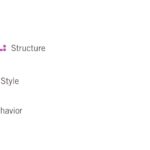Learning to play the violin is often perceived as a daunting task. But how difficult is it really? Two common reasons contribute to this perception: the absence of frets and the challenge of producing a good tone. Let’s delve into each of these aspects and uncover the truth.
The Fretless Fingerboard: A Blessing in Disguise
Unlike guitars or other fretted instruments, the violin’s fingerboard lacks frets to guide finger placement. This initially seems challenging, demanding precise finger positioning for accurate notes. However, this “limitation” unlocks a world of expressive possibilities. It allows for vibrato, portamento (sliding between notes), and subtle pitch adjustments impossible on fretted instruments. This freedom, while demanding practice, empowers violinists with unparalleled control over intonation and musical expression. The key to mastering the fretless fingerboard lies in focused ear training and consistent practice. Developing a keen ear helps recognize and correct pitch discrepancies, eventually leading to accurate intonation. Regular practice builds muscle memory and finger dexterity, making accurate note placement second nature.
Mastering Tone Production: The Heart of Violin Playing
Producing a pleasing tone on the violin is arguably the biggest hurdle for beginners. Unlike a piano, where pressing a key guarantees a consistent sound, the violin demands meticulous bow control and pressure to create a beautiful tone. Bow speed, weight, and contact point on the string all influence the sound produced, making it a complex interplay of technique and artistry. However, this complexity is precisely what makes the violin so captivating. It allows for an immense range of tonal colors and dynamics, enabling violinists to express a vast spectrum of emotions. From soft and melancholic to powerful and brilliant, the violin’s tonal possibilities are virtually limitless. While initially challenging, mastering tone production opens up a world of musical expression. This process involves breaking down the technique into manageable steps, starting with basic bow control exercises and gradually progressing to more complex bowing techniques. Consistent practice and guidance from a skilled teacher are crucial for developing a beautiful and resonant tone.
The Violin’s Learning Curve: Challenge and Reward
The violin undeniably has a steeper learning curve than some instruments. Producing a consistent, pleasant tone relies heavily on the player’s technique and muscle control, demanding dedicated practice and patience. However, this challenge is intrinsically linked to the violin’s remarkable versatility and expressive power. The absence of frets and the nuances of bow control, while initially difficult, unlock a world of musical possibilities unmatched by many other instruments. The journey of learning the violin may be demanding, but the rewards are immense. The ability to create beautiful music, express a wide range of emotions, and explore the instrument’s vast tonal palette makes the effort truly worthwhile.
Turning Challenges into Triumphs
The very aspects that make the violin challenging – the fretless fingerboard and the intricacies of tone production – are also what make it so rewarding. These features offer unparalleled control over pitch, tone, and expression, enabling violinists to create music with depth and nuance. Mastering these challenges unlocks a world of musical possibilities, making the journey of learning the violin a fulfilling and enriching experience.
